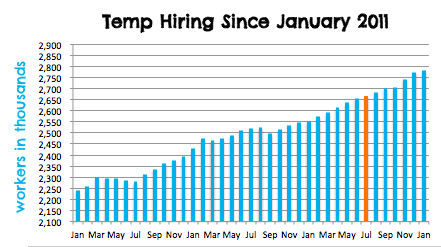That’s right, just like record-breaking news in the 2014 Winter Olympics, temporary workers are also breaking records this year.
Let’s start by pointing out that Sochi has laid claim to being the most expensive Olympics ever, with a price tag of more than $50 billion! And while there have only been two records broken so far by athletes, Dutch speed skater Sven Kramer set Sochi’s first Olympic record. Kramer beat his own previous record in the 5,000 metre by more than 4 seconds with a time of 6 minutes, 10.76 seconds. America broke a record too this year – did you know that we sent the largest delegation ever sent to a Winter Olympics with 230 athletes? Go USA!
So, while temperatures maybe be the highest ever in Sochi, how are temporary workers breaking the charts? The Bureau of Labor Statistics released on February 7th that there were 2.78 million contract and temp workers in the temporary help services industry in the U.S. 2.78 million is the largest number of temps in the workforce ever. The previous all time high of 2.657 million in August 2006 was surpassed in July of last year (orange line in the chart below).

source: Bureau of Labor Statistics
The number of temporary workers has steadily been on the rise since 2009, having dropped in the recession from the previous high in 2006 to low-point in August 2009, when there were only 1.75 million temps. This is off the charts low, when looking at the chart above.
Wondering what this means for workers and companies in the workforce? How can you adapt your career plan? What can you do to set the appropriate hiring strategy? Our president, Chris Burkhard is answering those questions on Thursday February 27 at our next talent seminar! If you’re in the tri-state area, please join us at Klondike Kate’s in Newark – get your tickets on Eventbrite. If not, connect with us here and we will share our latest contingent workforce white paper.
